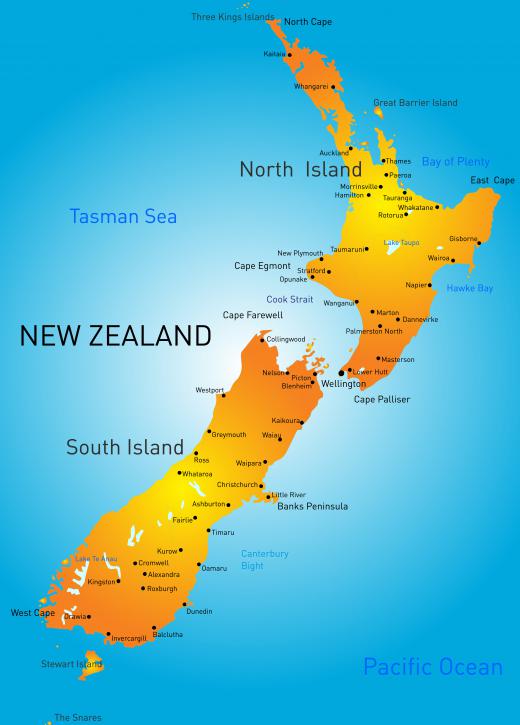What is the Polynesian Triangle?
 Michael Anissimov
Michael Anissimov
The Polynesian Triangle is a large imaginary triangle in the Pacific Ocean, encompassing over 1000 islands. Its vertices include the Hawaiian Islands, New Zealand, and Rapa Nui (Easter Island). Within the Polynesian Triangle is the area known as Polynesia ("many islands"), composed of seven primary cultures: New Zealand, Hawai'i, Rapa Nui, Marquesas, Samoa, Tahiti, and Tonga. The native languages within the Polynesian Triangle are known as the Malayo-Polynesian subgroup of languages by linguists. This language group derives from the proto-Austronesian language which was spoken in Southeast Asia 5000 years ago.
The Polynesian Triangle is one of the last areas on Earth to be colonized by humans. Colonization began about 1600-1200 BCE and was not completed until 1000 AD. It began from the Bismarck Archipelago, near New Guinea, which had been connected to the mainland by a land bridge during the last Ice Age, which ended 10,000 years ago. Starting in 1600 - 1200 BCE and over hundreds of years, the Lapita culture, which originated in the Bismarck Archipelago, spread eastward as far as Fiji, Samoa and Tonga.

An elaborate culture developed along the way. Around 300 BCE, these people spread to the Cook Islands, the Tuamotus, Tahiti, and the Marquesas Islands. Between 300 and 1200 AD, Polynesians discovered and settled Rapa Nui. In 500 AD they reached Hawaii, and in 1000 AD, New Zealand.
The outrigger canoe is often cited as the technological innovation that allowed long distance travel between the islands. Despite this, the Pacific Ocean covers nearly half the entire Earth, and most of the islands are separated by large expanses of ocean.
Today, the Polynesian Triangle is known to many Westerners as a popular tourist spot. New Zealand and the Hawaiian Islands are the only Polynesian islands large enough to have non-typical island features. New Zealand has a population of about 4.2 million while Hawaii has a population of 1.1 million. Together these account for more than 90% of the total population of Polynesia.
AS FEATURED ON:
AS FEATURED ON:











Discuss this Article
Post your comments